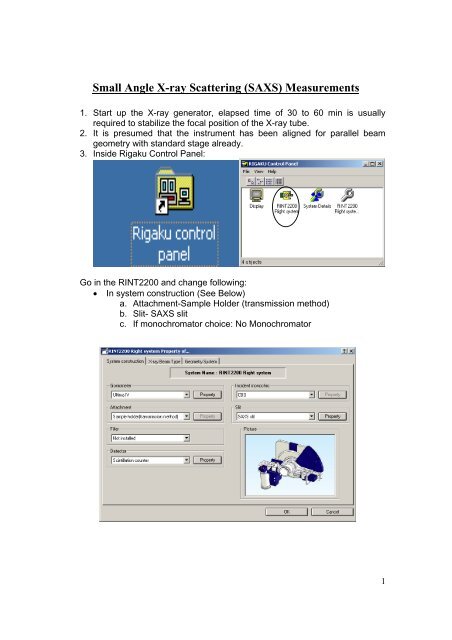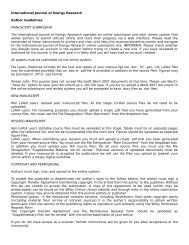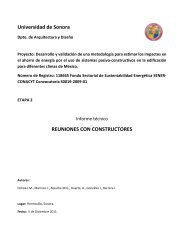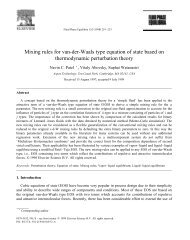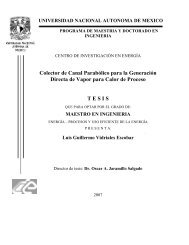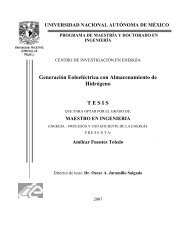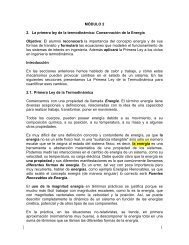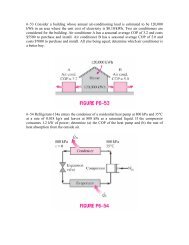Small Angle X-ray Scattering (SAXS) Measurements
Small Angle X-ray Scattering (SAXS) Measurements
Small Angle X-ray Scattering (SAXS) Measurements
You also want an ePaper? Increase the reach of your titles
YUMPU automatically turns print PDFs into web optimized ePapers that Google loves.
<strong>Small</strong> <strong>Angle</strong> X-<strong>ray</strong> <strong>Scattering</strong> (<strong>SAXS</strong>) <strong>Measurements</strong><br />
1. Start up the X-<strong>ray</strong> generator, elapsed time of 30 to 60 min is usually<br />
required to stabilize the focal position of the X-<strong>ray</strong> tube.<br />
2. It is presumed that the instrument has been aligned for parallel beam<br />
geometry with standard stage already.<br />
3. Inside Rigaku Control Panel:<br />
Go in the RINT2200 and change following:<br />
� In system construction (See Below)<br />
a. Attachment-Sample Holder (transmission method)<br />
b. Slit- <strong>SAXS</strong> slit<br />
c. If monochromator choice: No Monochromator<br />
1
� In geometry of the system (Figure 7)<br />
a. <strong>Small</strong> <strong>Angle</strong><br />
4. On the goniometer put standard sample holder, remove diffracted beam<br />
monochromator and start automatic alignment. During the alignment you<br />
will be asked to put the <strong>SAXS</strong> sample holder. <strong>SAXS</strong> slit and other<br />
attachments.<br />
5. Components that you will be asked to put are<br />
<strong>SAXS</strong> selection slit in place of PB slit<br />
Vacuum Path<br />
2
<strong>SAXS</strong> Unit<br />
6. Always put the sample in a way that sample surface faces the detector<br />
side.<br />
7. For collecting <strong>SAXS</strong> data, run a 2theta scan. A representative scan<br />
condition is described in Table 1 below.<br />
8. For analyzing <strong>SAXS</strong> data with NANO-Solver, a ratio of intensities (R) with<br />
and without sample is required, i.e.<br />
R = (Intensity with sample placed in sample holder using count<br />
monitor/Intensity without sample placed in sample holder using count<br />
monitor). Good values of R are between 1/3 to ½ (30-50%).<br />
a. If lower try slicing thinner sample or use reflection <strong>SAXS</strong><br />
b. If too high, add a layer to sample to increase X-<strong>ray</strong> absorbance<br />
Theta-D = 0<br />
Collect raw counts in theta/2theta mode with count monitor window and<br />
setting Theta-d and Theta-s at 0 degrees (0 degree for both arms by<br />
driving Theta-d and theta-s to zero) and using a Al absorber as attenuator<br />
in Manual Mode (see below), Make sure for all the runs the DS, RS and<br />
SS have same value.<br />
Now choose control axis as theta/2theta and using count monitor, press<br />
execute button. Note the counts both with and without the sample to get R.<br />
3
Table 1.<br />
Instrument Configuration and Scan Parameters for <strong>Small</strong> <strong>Angle</strong> <strong>Scattering</strong><br />
measurements (<strong>SAXS</strong>)<br />
Optics: Cross Beam Optic (CBO) with Parallel beam<br />
Sample Preparation : use the ground powder from previous measurements and<br />
sandwich approximately 3mg of sample between two layers of 0.0001” thick mylar film<br />
(from Chemplex). Screw the sample into the transmission holder and place in the beam<br />
path. Background measurements were also taken of just the two layers mylar film.<br />
For <strong>SAXS</strong><br />
Slits: Selection Slit: 0.03 mm<br />
Divergence Slit: 1mm<br />
Scatter Slit: 0.2 mm<br />
Receiving Slit: 0.1 mm<br />
Install Vacuum path boxes (2)<br />
Filter: No filter needed, no monochromator<br />
Detector: Scintillation Counter NaI (Tl)<br />
Scan Range: 0.1º to 8.0º 2�<br />
Scan Type: 2� only , fixed slit mode, chose a fixed 2theta = 1.5 degree<br />
Step Size: 0.01º2�<br />
Scan Speed: 10second dwell time FT (total time 98minutes)<br />
Run 2theta scans<br />
To measure background without sample use Al absorber as attenuator<br />
5
Figure 1. <strong>SAXS</strong> Transmission holder with sample sand witched in mylar film<br />
Figure 2. Various selection slits. Use 0.03 mm slit for <strong>SAXS</strong> measurement.<br />
6


